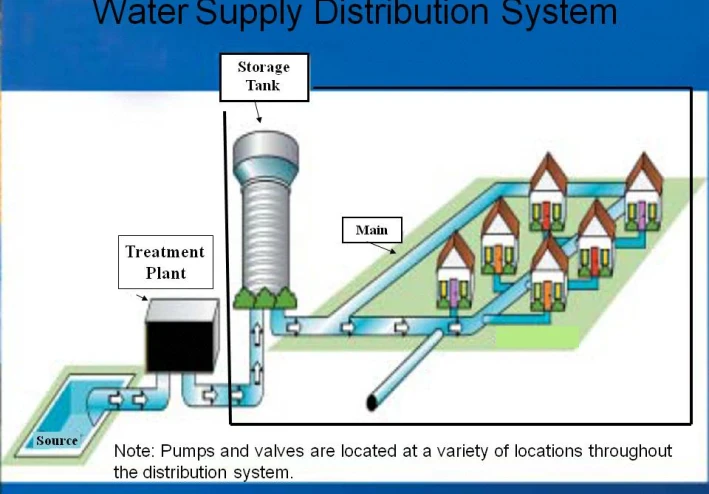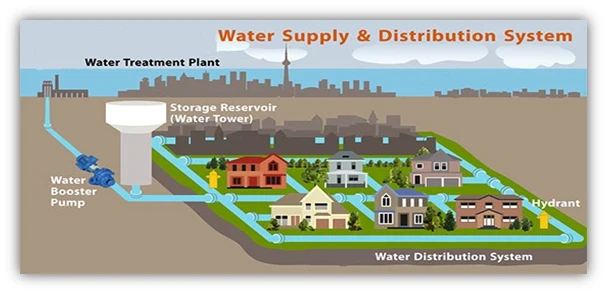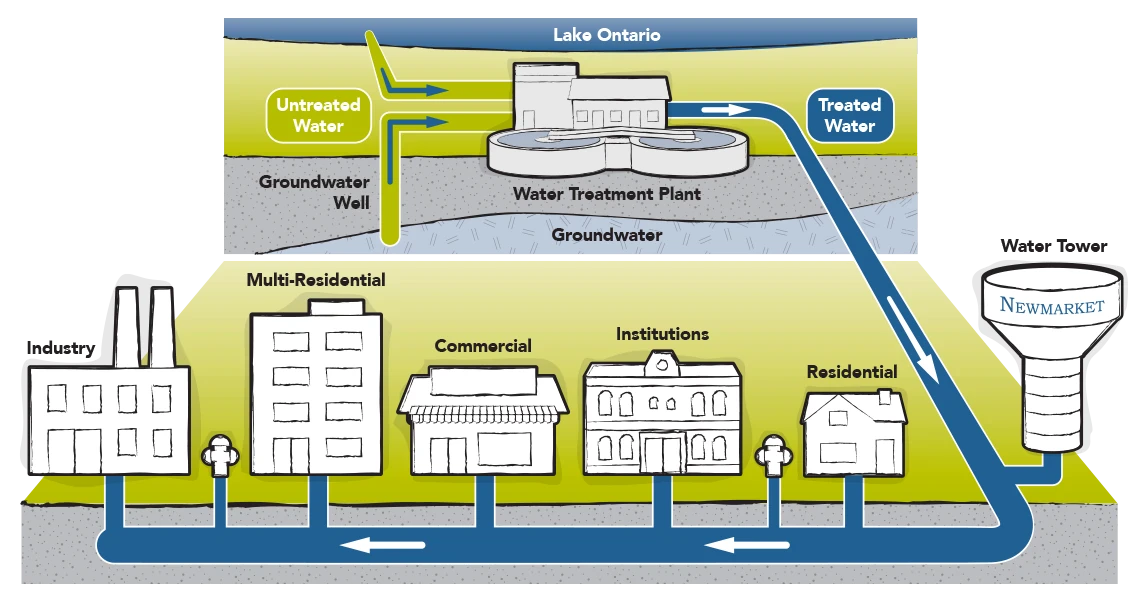
Drinking Water Network Design for a Residential City
Drinking Water Network Design for a Residential City
1. Introduction
The drinking water network is one of the most vital components of urban infrastructure. It ensures the continuous supply of clean and safe water to all residents. Designing such a network requires comprehensive studies that include water sources, treatment, transportation, and distribution in an efficient and sustainable manner.
2. Water Sources
Residential cities can depend on various sources to supply potable water:
- Surface Water: Such as rivers, lakes, or dams.
- Groundwater: Extracted from deep wells or natural springs.
- Treated Water: Reuse of treated wastewater for non-potable or secondary purposes.
The selection of the source depends on water quality, required quantity, and economic feasibility.
3. Water Treatment Process
To ensure that the supplied water meets health standards, a series of treatment steps are applied, including:
1. Sedimentation: Removal of suspended solids.
2. Filtration: Elimination of fine particles and turbidity.
3. Disinfection: Using chlorine or UV light to kill microorganisms.
4. Taste and Odor Correction: Addition of safe chemicals to improve palatability.
4. Water Distribution System
An efficient water distribution network ensures continuous delivery to all areas at the right pressure and flow rate. The main components include:
- Piping Network: Varying pipe diameters based on flow demand and distance.
- Storage Tanks: Elevated and ground-level tanks to maintain supply during peak hours and emergencies.
- Pumping Stations: Used to lift water to high-altitude zones or over long distances.
- Valves and Control Devices: Regulate pressure, prevent backflow, and allow easy maintenance.
5. Hydraulic Design Considerations
The hydraulic design defines the flow capacity, pressure levels, and pipe diameters throughout the network. It includes:
- Demand Estimation: Calculating present and future water consumption.
- Flow Analysis: Determining peak and average flow rates.
- Pressure Management: Maintaining sufficient pressure in all zones.
- Pipe Sizing: Using software tools such as EPANET or WaterCAD to simulate flow conditions and optimize diameters.
- Head Loss Calculation: Ensuring energy efficiency and minimizing friction losses.
6. Network Design Criteria
Several technical and environmental factors must be considered during design:
- Future Expansion Capacity: Accounting for population growth and urban development.
- Water Loss Control: Using high-quality pipes, proper jointing, and leak detection systems.
- Health and Safety: Preventing contamination and maintaining residual chlorine levels.
- Ease of Maintenance: Providing access points, inspection valves, and isolation sections.
7. Environmental and Health Considerations
Protecting water sources from pollution and ensuring public health is a major design objective. This involves:
- Implementing buffer zones around wells and reservoirs.
- Regular water quality testing.
- Ensuring proper waste disposal to prevent groundwater contamination.
- Using corrosion-resistant materials in pipes and fittings.
8. Economic and Operational Aspects
Cost-effectiveness and sustainability are essential in network design. The economic study includes:
- Initial Construction Cost (pipes, pumps, and tanks).
- Operation and Maintenance Costs (energy, labor, spare parts).
- Life Cycle Cost Analysis to select the most sustainable materials and technologies.
- Energy Optimization through the use of efficient pumps and renewable energy systems.
9. Emergency and Reliability Planning
The network should be designed to maintain service continuity during crises:
- Backup Storage Tanks and standby pumps.
- Looped Network Design to allow alternate flow paths.
- Firefighting Connections integrated within the system.
- Emergency Response Protocols for contamination or pipe failure incidents.
10. Sustainability and Smart Technologies
Modern innovations can greatly enhance water management:
- Smart Sensors and Remote Monitoring for pressure, flow, and leak detection.
- Automated Control Systems for efficient pump operation and demand regulation.
- Public Awareness Campaigns encouraging water conservation habits.
- Renewable Energy Integration such as solar-powered pumping stations to reduce carbon footprint.
11. Conclusion
Designing a drinking water network for a residential city requires a holistic approach that integrates engineering, environmental, and economic considerations. A well-designed system ensures safe, continuous, and sustainable water delivery to all residents. This investment contributes directly to improving public health, quality of life, and urban resilience for future generations.





































